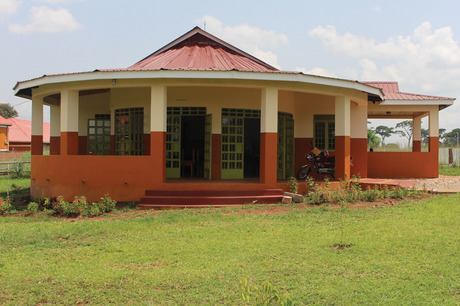
Retired headteacher Di Cosgrove is one of the three founders of the Redearth Education charity, based in Masindi, Uganda. There, the Redearth Model Nursery caters for 75 three- to six-year-olds, having opened in February 2015.
Q. Can you tell me a bit about your background?
A. I worked in Birmingham as a primary teacher, then headteacher, for 36 years before retiring in 2007 to run a B&B for five years. When I first became headteacher at Rednal Hill Infant School in 1993, I set up a nursery unit there.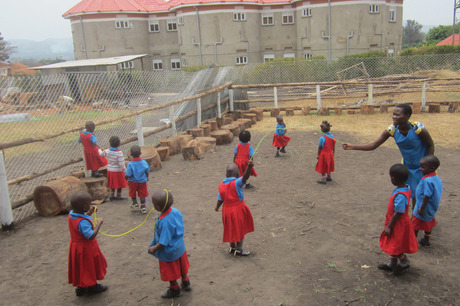
Q. How did you get involved with schools in Uganda?
A. I visited Kenya in the 90s and fell in love with Africa. In 2003, I applied to become a global teacher through Link Community Development and spent the summer living in Masindi, a rural district of Uganda. My role was to work with a headteacher and his staff on school development. I met Lynne Pritchard and Ronnie Katzler there, also from the UK.
The three of us volunteered to return to train 100 teachers in literacy. The summer after that we trained 100 in numeracy. In 2006, we wrote a training programme on teaching and learning for Masindi schools. The teachers we trained then trained teachers in their own schools.
In 2006 we also formed our own charity, Redearth Education. Much has happened since. We now work with 106 schools to deliver an Early Reading programme; we’ve set up an Achievement Award Scheme for schools that have implemented our training. In February 2015, we opened the Redearth Model Nursery, Training and Resource Centre. The nursery currently has two classes of 25 three-year-olds and 25 four-year-olds, and in 2016 there will be an additional class.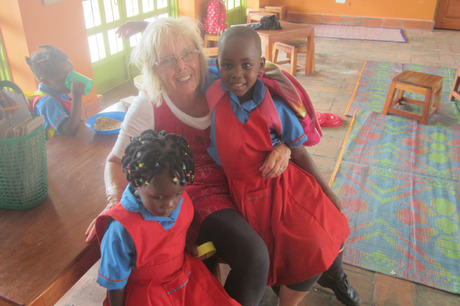
Q What is your involvement?
A. My area of responsibility is nursery education, while my colleagues, Lynne and Ronnie, who now live in Uganda, are involved in the other aspects of Redearth Education.
Over the past four years, I’ve researched the context and training of nursery education in Uganda and visited many nurseries in Kampala and Masindi. I’ve delivered training to nursery teachers in Masindi and given support through visits.
I usually visit Uganda twice a year for three weeks, but I’ve been more often this year as I’ve been training and supporting the two teachers at our model nursery, and I’ve appointed a teacher for the extra intake in February.
I’ve also supported the centre manager and helped organise an additional classroom.
With Lynne and Ronnie, we are now developing a succession plan in order to make the centre and nursery self-sustaining, which is crucial.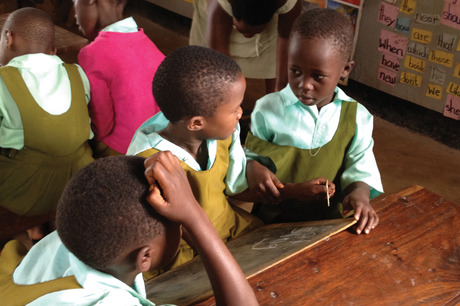
Q What are the main aims of your work?
A. We believe that education is the way out of poverty. Through our work we can see this happening. Unfortunately, though, the training for nursery teachers is generally poor; nurseries have few or no resources and buildings are sub-standard.
A typical nursery class has up to 100 children seated in rows or on the floor, with a teacher in front of a chalkboard and children frequently chanting. We help teachers to improve their practice and learn in a more interactive way.
Redearth Nursery is not only a working nursery, it is also a model of good practice where nursery teachers in Masindi can access professional development and learn first-hand how to improve their own nurseries.
We follow the Ministry of Education and Sports Guidelines for Early Childhood Development Centres, and the requirements for the building, furniture and resources, class numbers, staffing, organisation, planning and curriculum.
All resources, for example games and charts, are made from local materials such as sugar sacks, banana fibre and plastic bottles, which teachers can replicate in their nurseries.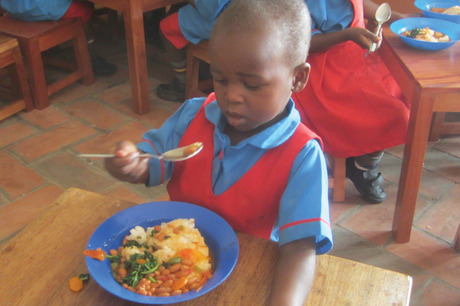
Q What is the approach to early years education that you’re trying to implement?
A. We’re educating teachers to move away from the present didactic approach to a more play-based, child-centred environment. Although this is the Ugandan Government’s aim and is set out in its ‘Learning Framework for Early Childhood Development’, there is an enormous gap between theory and practice.
It’s too big a step to make huge changes so we slowly introduce new methods. At our nursery, teachers might introduce a theme using traditional ‘talk and chalk’, but this will be followed by practical, child-centred activities that would not otherwise have happened.
For example, in a lesson with four-year-olds where the teacher introduced the concept of sweet and sour, children sat, listened and discussed it with the teacher. Then they worked in twos, tasting and discussing different foods. When they had decided and agreed what was sour and sweet, they placed the foods against sweet or sour labels. The whole class then discussed their findings.
Afterwards, the teacher was surprised at the extent to which children could discuss this and how much they learned though the activity. The teachers see the benefits of child-centred activities, so much more active learning is employed.
Other activities on offer include water play, role play and creative activities. Children particularly love making shapes and letters with homemade playdough.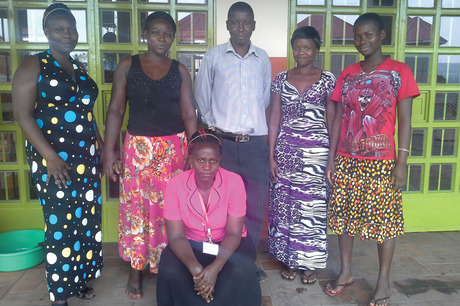
Q What are the challenges and benefits to children, Ugandan practitioners and parents?
A. A major challenge for children was learning to play appropriately. They had never experienced sand and water play and didn’t know how to take turns. It was hard at the beginning; now they have learned to co-operate and take turns, and the teachers have good control.
Collecting children at the end of the day has been problematic as boda boda (motor bike) taxis are often used and can be very late.
Parents are extremely happy with the nursery as their children enjoy it so much and are making extremely good progress. They would like their children to be taught in English only, but the Ugandan Government stipulates that children should be taught in Runyoro, their local language; we are compromising and teach in both languages.
The children are learning so effectively that a challenge will be their progression. Redearth Education does not have the resources to build a primary school.
More information
